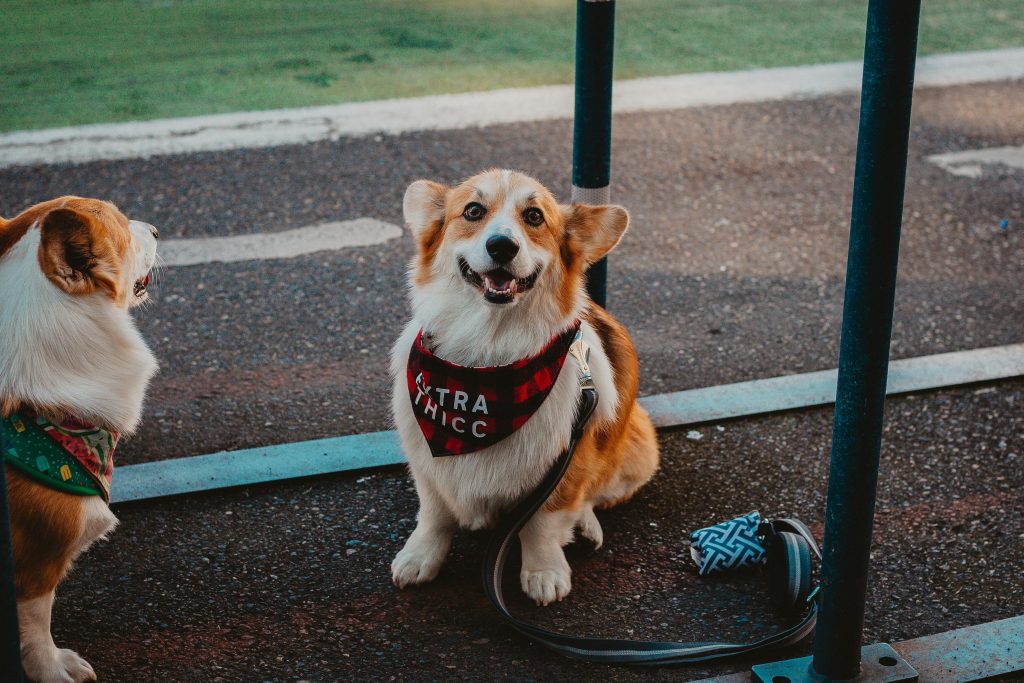To teach your dog to follow commands, the first step is to get your dog to successfully perform the command for the very first time. We break down the training into six parts to guide your dog in learning new commands effectively.
1.Lie Down: Help Your Dog “Cool Off” When Overexcited
Having your dog lie down and stay still is one of the most direct ways to calm it down. Compared to “sit,” lying down is like turning the emotional “gas stove” all the way off, whereas sitting down only turns it down low. When your dog is overly excited, give the “lie down” command early to help it calm down quickly. If you need your dog to stay put for a longer time, the lie down command lets your dog wait more comfortably by your side.
2.Command and Gesture
For the lie down command, use your index finger pointing to the ground while saying “lie down.” You can also hold a treat in your palm and immediately reward your dog once it lies down. Use a cheerful and rising tone to encourage your dog to cooperate enthusiastically.
3.How to Train Your Dog to Lie Down
Lying down is generally harder to teach than sitting because dogs tend to do it only when relaxed. Every dog is different, so here are three methods you can try depending on your dog’s personality. The difficulty level increases from Method 1 to Method 3. If your dog can’t follow naturally, increase the guidance gradually—but only if your dog doesn’t resist or try to run away. You’ll need a leash, collar, and treats.

① Natural Food Lure
If your dog is cheerful, stable, and obedient, simply use food to guide the movement.
- Have your dog sit in front of you. Hold the treat near its nose, then slowly lower it to the ground.
- As your dog follows the treat with its nose, its body will naturally lower into a lying position.
- When your dog is about to touch the treat, keep it between its front paws and slowly move it away, encouraging your dog to lie down comfortably.
②Use Height Difference for Guidance
If your dog is restless and can’t stay still, use the leash to restrict movement and guide your dog down using a height difference where available. This setup prevents your dog from being scared of heights.
- Have your dog sit at an elevated edge and hold the treat on the lower step, so your dog’s head naturally lowers to reach the treat. Give the “lie down” command as its posture changes.
- You can squat to guide your dog or gently use the leash to help it find the direction. Be patient and avoid forcing your dog with the leash; always use the treat as motivation.
- Once your dog lies down, release the leash and give plenty of praise, pets, and treats to reinforce the behavior.
③Gentle Shoulder Pressure
For more stubborn dogs, apply gentle pressure on the shoulders to encourage lying down.
- If your dog resists, hold a treat in one hand and gently pull the leash to confirm direction.
- Use your finger pad to softly press the dog’s shoulders, reminding it to lie down. Move slowly to avoid resistance.
- The goal is to guide the dog to lie down voluntarily, not force it.

4.Timing Rewards and Adjusting Your Behavior
Adjust when you reward based on your dog’s progress:
- Early on, give treats immediately as your dog lies down to stabilize the behavior.
- Once your dog understands the command, delay the reward a few seconds after lying down.
- Also, adjust your posture during training: if you start by squatting, gradually stand up and step farther away as training progresses. Don’t let your dog think it only needs to lie down when you squat.
- If you trained using height differences, after a few days, transition back to flat ground to ensure your dog responds in any setting.
At the end of every training session, always leave your dog with a positive impression. Even if your dog hasn’t mastered the new command yet, make sure to finish with a command it already knows and reward it for completing that successfully.

